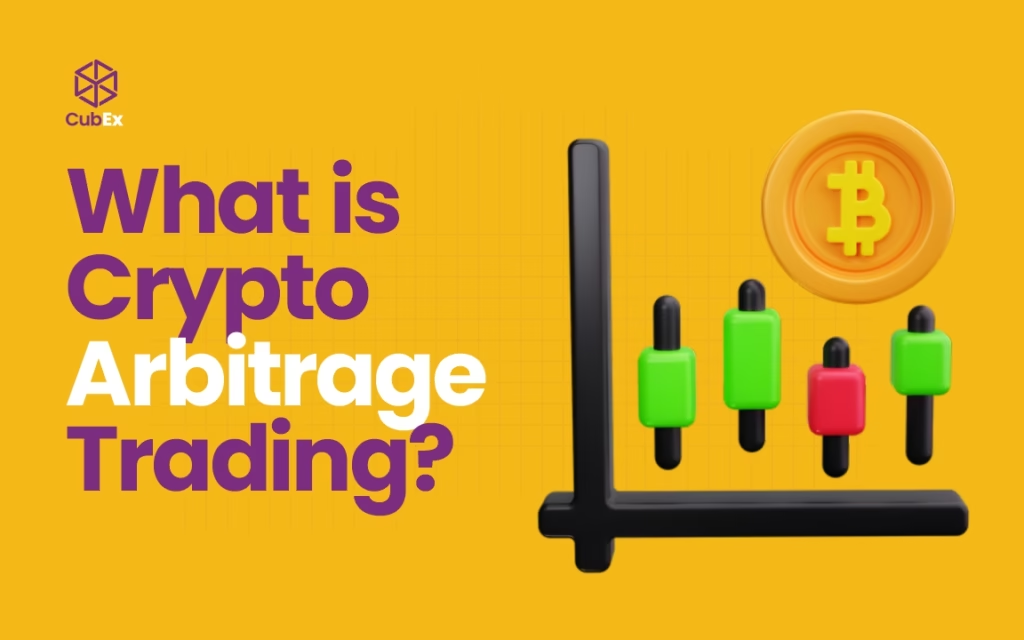
- Cryptocurrency
- By Cubex
What is Crypto Arbitrage Trading?
Cryptocurrency markets are known for their volatility, fast pace, and around-the-clock activity. But for savvy traders, these very characteristics can create unique profit opportunities , one of which is crypto arbitrage trading.
If you’ve ever heard the term and wondered what it means (or if it’s just another crypto buzzword), this post breaks it down for you.
Understanding Arbitrage: The Basics
Arbitrage is a trading strategy that involves buying an asset in one market and simultaneously selling it in another at a higher price, profiting from the price difference. This concept isn’t unique to crypto; it’s been used in traditional finance for decades.
In the context of cryptocurrencies, arbitrage takes advantage of the fact that digital assets can be priced differently across various exchanges. For instance, Bitcoin might be trading at $30,000 on Exchange A and $30,200 on Exchange B. A crypto arbitrage trader could buy BTC on Exchange A and sell BTC immediately on Exchange B pocketing the $200 difference (minus fees).
How Crypto Arbitrage Trading Works
Here’s a step-by-step look at a simple arbitrage trade:
- Monitor Multiple Exchanges: Use a tool or platform to track crypto prices across several exchanges.
- Identify a Price Gap: Spot a coin that’s cheaper on one exchange than another.
- Execute Simultaneous Trades: Buy on the lower-priced exchange and sell on the higher-priced one.
- Profit from the Spread: After accounting for fees and transfer times, the price difference becomes your profit.
- Monitor Multiple Exchanges: Use a tool or platform to track crypto prices across several exchanges.
Types of Crypto Arbitrage Strategies
There are a few variations of arbitrage trading in the crypto world:
1. Spatial Arbitrage
This is the most common form. It involves buying and selling the same cryptocurrency on different exchanges.
2. Triangular Arbitrage
This involves exploiting price differences between three currencies on the same exchange. For example, you might exchange BTC to ETH, ETH to USDT, and USDT back to BTC ending up with more BTC than you started with due to slight inefficiencies in pricing.
3. Statistical Arbitrage
Uses algorithms and quantitative models to predict price differences and execute trades automatically. This is more complex and typically used by advanced traders or institutions.
Why Do These Price Differences Exist?
Several factors can lead to price variations between exchanges:
- Liquidity differences: Smaller exchanges may have lower trading volume, causing price discrepancies.
- Geographic demand: Local demand for a coin may spike in one region, affecting its price on that exchange.
- Transfer delays and fees: Moving funds or coins between platforms takes time and money, which can prevent quick price equalization.
Pros and Cons of Crypto Arbitrage Trading
Pros:
- Low-risk (in theory): Profits are based on price inefficiencies, not market direction.
- Quick returns: Trades can be executed in minutes.
- No long-term holding required: Avoids the volatility of long-term investing.
Cons:
- Fees eat into profits: Trading fees, withdrawal fees, and transfer times can reduce margins.
- Fast execution required: Prices can change quickly, closing the arbitrage window.
- Regulatory and KYC restrictions: Not all exchanges are accessible worldwide.
- High capital requirement: More capital may be needed to make the small spreads worthwhile.
Conclusions
Crypto arbitrage trading can be an appealing way to profit from the crypto markets without betting on which direction a coin will go. However, it’s not without its risks and requires the right tools, timing, and strategy to succeed.
If you’re new to trading, it’s a good idea to start with simulated environments or small amounts to learn the ropes. For seasoned traders or those with access to automation tools, arbitrage can be a powerful way to leverage the dynamic nature of crypto markets.

12 Most Popular Types of Crypto Coins

